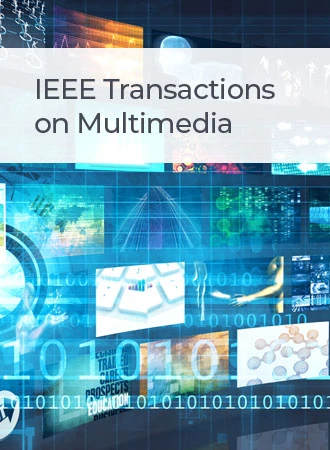Enhancing Neural Adaptive Wireless Video Streaming via Cross-Layer Information Exposure and Online Tuning
IF 9.7
1区 计算机科学
Q1 COMPUTER SCIENCE, INFORMATION SYSTEMS
引用次数: 0
Abstract
Deep reinforcement learning (DRL) demonstrates its promising potential in adaptive video streaming and has recently received increasing attention. However, existing DRL-based methods for adaptive video streaming mainly use application (APP) layer information, adopt heuristic training methods, and are not robust against continuous network fluctuations. This paper aims to boost the quality of experience (QoE) of adaptive wireless video streaming by using cross-layer information, deriving a rigorous training method, and adopting effective online tuning methods with real-time data. First, we formulate a more comprehensive and accurate adaptive wireless video streaming problem as an infinite stage discounted Markov decision process (MDP) problem by additionally incorporating past and lower-layer information. This formulation allows a flexible tradeoff between QoE and computational and memory costs for solving the problem. In the offline scenario (only with pre-collected data), we propose an enhanced asynchronous advantage actor-critic (eA3C) method by jointly optimizing the parameters of parameterized policy and value function. Specifically, we build an eA3C network consisting of a policy network and a value network that can utilize cross-layer, past, and current information and jointly train the eA3C network using pre-collected samples. In the online scenario (with additional real-time data), we propose two continual learning-based online tuning methods for designing better policies for a specific user with different QoE and training time tradeoffs. The proposed online tuning methods are robust against continuous network fluctuations and more general and flexible than the existing online tuning methods. Finally, experimental results show that the proposed offline policy can improve the QoE by 6.8% to 14.4% compared to the state-of-the-arts in the offline scenario, and the proposed online policies can achieve通过跨层信息暴露和在线调整增强神经自适应无线视频流
深度强化学习(Deep reinforcement learning, DRL)在自适应视频流中显示出其巨大的潜力,近年来受到越来越多的关注。然而,现有的基于drl的自适应视频流方法主要利用应用(APP)层信息,采用启发式训练方法,对持续的网络波动缺乏鲁棒性。本文旨在利用跨层信息,推导严格的训练方法,采用有效的实时数据在线调优方法,提高自适应无线视频流的体验质量(QoE)。首先,我们将一个更全面、更准确的自适应无线视频流问题作为一个无限阶段贴现马尔可夫决策过程(MDP)问题,另外结合过去和下层信息。这个公式允许在QoE和解决问题的计算和内存成本之间进行灵活的权衡。在离线场景下(仅使用预先收集的数据),我们通过联合优化参数化策略和价值函数的参数,提出了一种增强的异步优势参与者-批评者(eA3C)方法。具体而言,我们构建了一个由策略网络和价值网络组成的eA3C网络,可以利用跨层、过去和当前的信息,并使用预采集的样本共同训练eA3C网络。在在线场景中(使用额外的实时数据),我们提出了两种基于持续学习的在线调优方法,用于为具有不同QoE和训练时间权衡的特定用户设计更好的策略。所提出的在线整定方法对连续的网络波动具有鲁棒性,比现有的在线整定方法具有通用性和灵活性。最后,实验结果表明,所提出的离线策略比离线场景下的QoE提高了6.8% ~ 14.4%,而在线策略比在线场景下的QoE提高了6.3% ~ 55.8%。
本文章由计算机程序翻译,如有差异,请以英文原文为准。
求助全文
约1分钟内获得全文
求助全文
来源期刊

IEEE Transactions on Multimedia
工程技术-电信学
CiteScore
11.70
自引率
11.00%
发文量
576
审稿时长
5.5 months
期刊介绍:
The IEEE Transactions on Multimedia delves into diverse aspects of multimedia technology and applications, covering circuits, networking, signal processing, systems, software, and systems integration. The scope aligns with the Fields of Interest of the sponsors, ensuring a comprehensive exploration of research in multimedia.
 求助内容:
求助内容: 应助结果提醒方式:
应助结果提醒方式:


